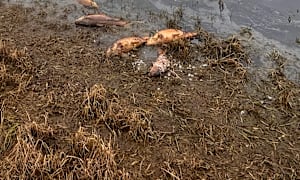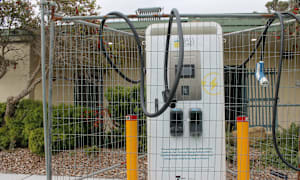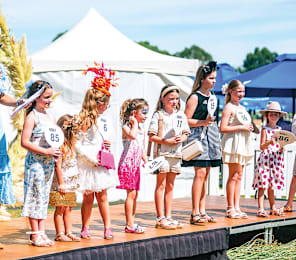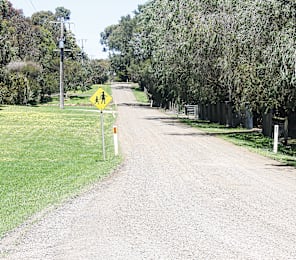WITH SPRING already upon us and summer on the way new research has shown that the cooling potential of many of our favourite street trees is reduced by truly sweltering hot weather.
Communities seeking to plant more trees to help combat climate change may not be as effective as we once thought.
Without proper tree selection not only is there a negligible cooling effect during heatwaves but trees under water stress can adversely affect our health.
A recent study by the University of New South Wales suggests extremely hot conditions can significantly reduce the shade effect of street trees.
“Conventional climate models can overestimate the ability of trees to cool during heat waves by up to sixty per cent,” according to researchers Kai Gao, Dr Jei Feng and Professor Mattheos (Mat) Santamouris.
Adding green infrastructure to the urban landscape, especially by the planting of trees is a common measure used by local government to try to reduce urban heat.
Bass Coast has a substantial coverage of evergreen trees in urban areas with the Shire planning to plant thousands more at a rate of around five hundred trees per year.
Council says planting trees offers countless benefits for our community beyond the ecological benefits.
“There are the very important visual and urban amenity values created by the eventual tree canopy as well as the creation of spaces that enhance the mental and physical wellbeing of residents and visitors,” according to a council spokesperson.
Species selected from an existing preferred list include an extensive range of natives and a smaller group of exotics.
Inverloch has native species, while Wonthaggi has ornamentals.
However, new research shows trees have limits during heat waves.
“It’s not to say that planting trees is not important for heat mitigation, but large-scale plantings require careful consideration,” claim the researchers.
Typically, temperature reduction caused by green infrastructure in normal summer conditions is around one to two degrees during the day.
Much of this cooling effect results from transpiration, where trees release water vapour through their leaves, absorbing heat and reducing the surrounding air temperature.
However, trees can take precautions under heat stress to maintain moisture and avoid dryness by holding onto their sap which reduces transpiration flow and a tree’s ability to cool.
“Once trees reach a threshold temperature of around thirty-four degrees, they try to protect themselves by reducing the circulation of sap,” Prof. Santamouris says.
“This decreases their transpiration rate, which significantly reduces the ability of trees to cool to an ambient temperature while in rare cases, may even result in heating.”
Bass Coast has identified potential climate change hazards including increased average temperatures and solar radiation, increased extreme heat days, more extreme storm, and bushfire events, decreased annual rainfall and rising sea levels.
The biggest impacts on the urban landscape from climate change according to Bass Coast will be warmer average temperatures and a reduction in average rainfall.
Prof. Santamouris says decision-makers need to be selective about the types of trees used and the various temperature thresholds of varied species.
Under extreme temperatures, trees can also emit high concentrations of Biogenic Volatile Organic Compounds (BVOCs) like Isoprene which can harm air quality by interacting with other atmospheric pollutants.
Water availability is also crucial to a tree’s ability to reduce urban heat.
Not watering trees during extremely hot days limits their cooling potential.
“Water management plans must be essential to any tree planting strategy,” says Prof. Santamouris.
Bass Coast’s Urban Forest Plan includes street and road trees, parks and gardens, foreshore vegetation, residents’ front and back gardens, trees in carparks and vegetation along waterways.
Bass Coast considers the urban forest to be one of the most cost-effective and efficient mechanisms for adapting local towns to climate change.
The plan is to ensure at least a minimum of twenty-five per cent canopy coverage across the Shire increasing to an average of forty per cent by 2040.
While plant physiologists are working to create genetically modified trees with higher temperature thresholds these variants are at least a decade away.
“Instead of having a threshold of around thirty-four degrees, genetically modified trees may have a threshold of up to forty-five degrees making them more suited to endure extreme heat” the university researchers suggest.
Prof. Santamouris says it is vital that urban heat mitigation efforts be based on the latest scientific evidence, especially as global temperatures continue to rise.
Planting species that are likely to withstand a changing climate is seen as critical along with planting understorey where possible, creating good growing conditions for new trees with adequate soil moisture levels, providing above-ground space and mulching to encourage deep root establishment.
“Any cooling policy in urban areas based on the plantation of trees must take into account the science involved or risk the tremendous investment not having the desired cooling results and at worst, having adverse health effects,” said Prof. Santamouris.
“The problem of urban heat cannot be solved simply by planting trees.











